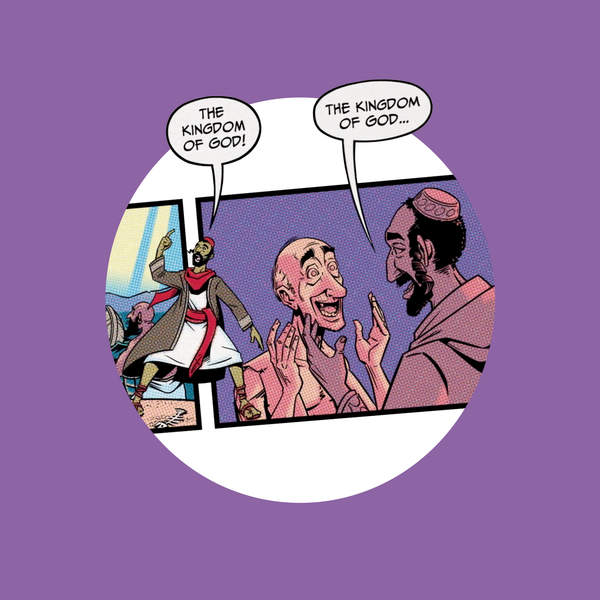
Crossing the Chaotic Waters
Episode Chapters
Show Notes
This is another episode in our How to Read the Bible Series. Today Tim and Jon discuss literary design patterns in the Bible. In part 1 (0-12:27), the guys discuss the ways Bible stories often pattern after each other. Tim explains that he is working on a project with other Bible scholars studying how many biblical stories build on each other. Tim says many Bible stories are set up in parallel, to replay key themes the writers are trying to make. Jon provides a real life example of Toy Story 3. The Toy Story 3 writers watched dozens of prison break movies in order to write the “daycare/prison break out” scene in Toy Story 3. Tim says that’s a good example of a layering technique being used in modern day. The classic prison break is layered into a children’s movie. In part 2 (12:27-19:15), Tim says the biblical authors were very intentional about building an entire universe of meaning in the biblical stories themselves. There are thousands of hidden “hyperlinks” of key repeated words, phrases and repeated characters that link all Bible stories together. There is no such thing as an isolated story in the Bible. An example of Bible stories linking together is David and Bathsheba and the eating of the apple in Genesis. In Hebrew, it says “(Bathsheba) was good of sight, very.” Tim says this links back to Adam and Eve seeing the “fruit was good of sight” which links back to God saying things were “good, very good.” So the reader is supposed to ponder upon who decides what “good” is in these stories. David? God? Adam and Eve? In part 3 (19:15-26:46), the guys dive into the creation story at the beginning of the Bible. Tim says Genesis 1 is set up in a very unique way. Tim says the fundamental image of chaos is dark, untamed waters. Jon offers an interesting comment about a new shark species that was recently discovered in the dark ocean. Tim outlines the first three days as the separation of realms. (Day 1) separating light from dark, (day 2) separating water from water, (day 3) separating water from dry land. Then the next three days, 4,5,6 are the creation of inhabitants of the realms in the first three days. In part 4 (26:46-35:18), Tim says, the creation account is presented in such a way that God separates the chaotic waters to create a stable habitation where humans can live. Thinking about the Biblical authors desire to layer stories on each other, Where else does this theme of God separating waters appear in the Bible? All over the Bible. The story of Noah is depicted as the “de-creation” of the world. The world sinks back into “chaotic waters.” God remembers Noah and causes a “ruach to to pass over the land” just like the original creation story, he is separating the waters from the land and re-creating a habitation for humans. In part 5 (35:18-end), Tim asks Jon “what was God doing with all this separating?” Jon and Tim discuss how the cause of creation descending back into chaos is human evil. Humans choose violence, bringing the world back to a place where God turns it over to chaos. The next story where God tames the waters to rescue his people is the Exodus story. God “remembers Israel” when they cry out about their oppression in Egypt just as he “remembers Noah”. Tim says when Israel crosses the Red (Reed) Sea, it merges days 2 and 3 in creation. Moses splits/separates the waters to reveal dry land. Israel also passes through the waters, saved by God, just as Noah passed through the waters, saved by God. Jon asks what’s the purpose of telling stories like this is. Jon is confused, is salvation really this complicated? What does all this mean for the modern person? Tim tells Jon to be patient, and that the ultimate end of the flood and water imagery in the Bible is the Christian tradition of baptism. Thank you to all our supporters!
Show Produced By:
Dan Gummel. Jon Collins. Tim Mackie. Matthew Halbert-Howen.
Scripture References
Referenced Resources
- Our video on “Design Patterns in The Bible”: https://thebibleproject.com/videos/design-patterns-biblical-narrative/
- The new species of shark discovered: https://news.nationalgeographic.com/2017/11/prehistoric-frilled-shark-bycatch-deep-sea-spd/
- "Metaphors We Live By" by George Lakoff
- "More Than Cool Reason" by George Lakoff
- "The Lost World of Genesis One" by John Walton
Check out Tim's library here. You can experience our entire library of resources in the BibleProject app, available for Android and iOS.

